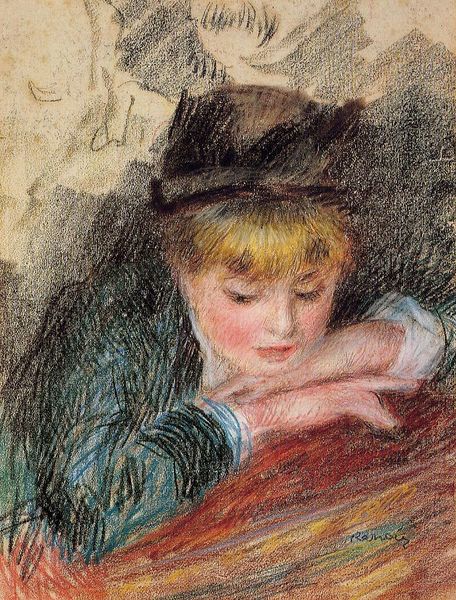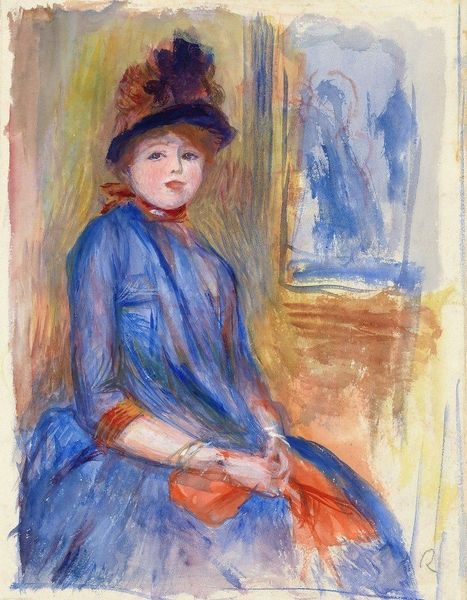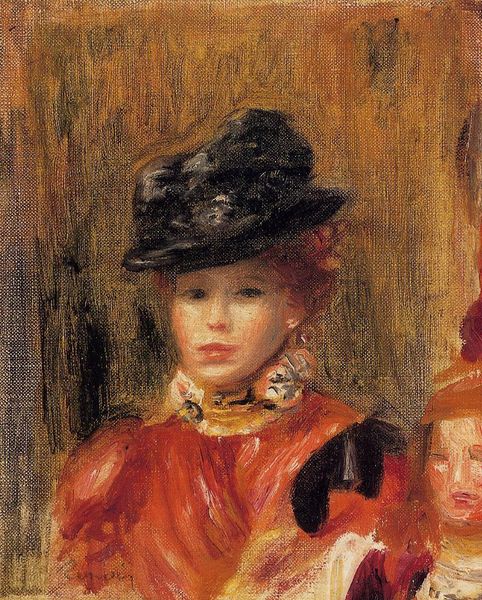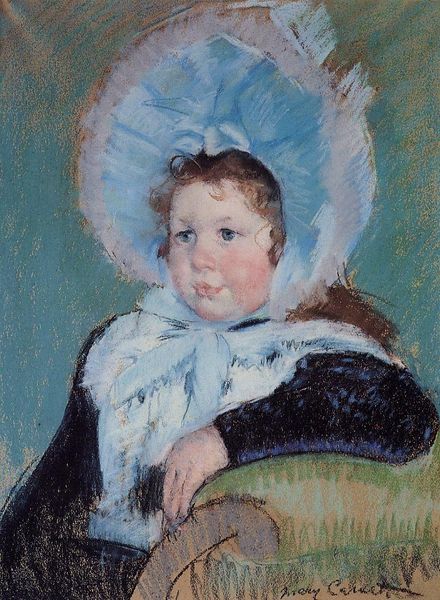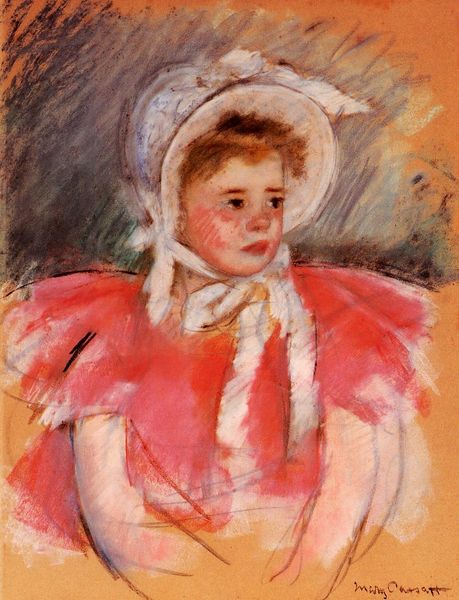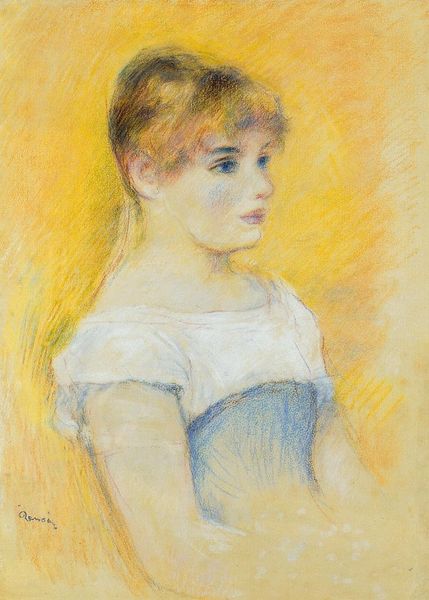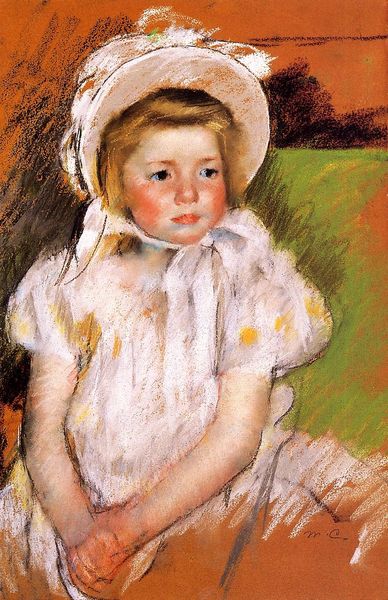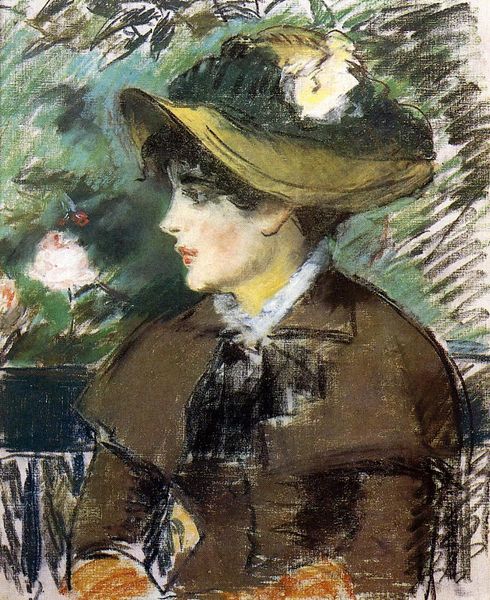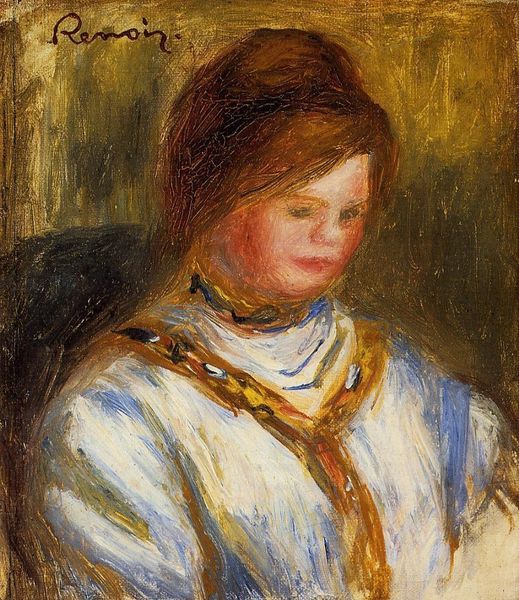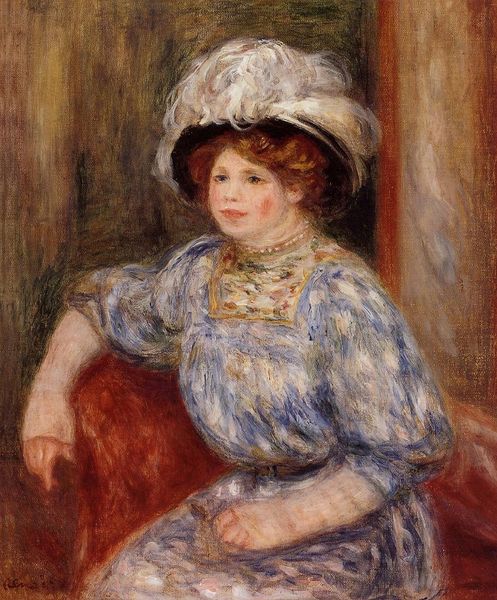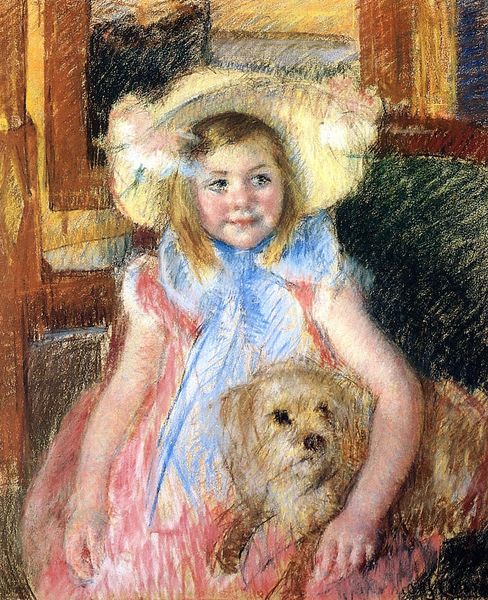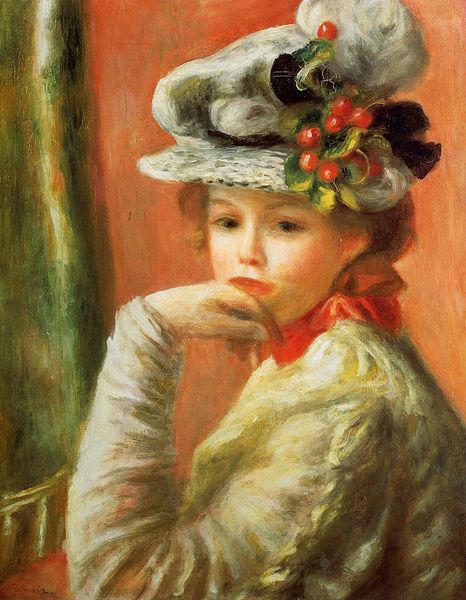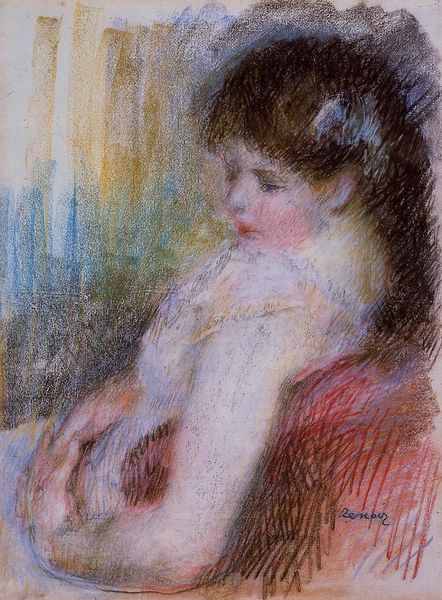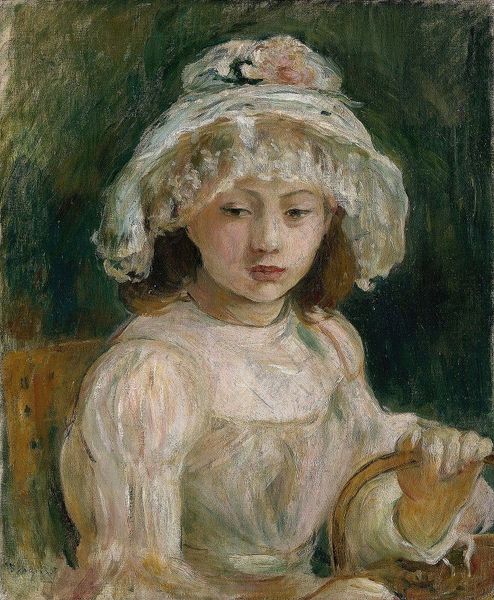
Copyright: Public domain
Curator: Oh, wow. Immediately, there's just a kind of soft wistfulness that washes over you when you see this. A delicacy... almost like it could float away if the breeze caught it just right. Editor: Precisely. We are looking at Mary Cassatt's pastel work from 1903, entitled “Simone in Plumed Hat.” The choice of pastel as the medium already signifies an embrace of the ephemeral and the intimate. How does this capture childhood within the structures of its time? Curator: It’s funny, isn’t it? That we immediately try to read “structure” into this incredibly…fleeting moment? I'm captivated by the simplicity in her face – an openness, perhaps, or maybe just unguarded vulnerability? Childhood rendered in the abstract—the raw, unfiltered feelings, without all the polished presentation. And it speaks volumes, even if you don't know exactly *what* it's saying. Editor: Absolutely. Cassatt’s technique here is a rebellion, of sorts, against the rigid conventions that historically constricted the representation of women and children. Consider how traditional portraiture of young girls in this era would almost certainly depict them as proper, polished, mini-adults. Simone here exists outside that realm, doesn't she? Her identity isn’t predefined or pre-packaged for societal consumption. The gaze drifts; there is possibility. Curator: It’s true. The plumed hat is almost a… performance of girlhood? Something imposed. I see not just a little girl, but all those latent yearnings for… becoming? for recognition, even... Editor: Or, rather, our desires, our societal need, to define girls that way, and to make that "yearning" part of their identity. Looking at "Simone in Plumed Hat," it pushes back by resisting the flattened projection that girlhood be packaged, primed for societal performance. What does it mean, this art, to refuse expectations so deftly? Curator: Refusal, absolutely. What stays with me isn’t what is definitively said but the possibilities whispered between the lines, in the subtle gradients and the suggestive strokes. Editor: I think that this "Simone" reminds us to question the stories we tell ourselves about the past, about women, about girlhood. And what could be a better way to honour that act of continual interrogation than through art?
Comments
No comments
Be the first to comment and join the conversation on the ultimate creative platform.
